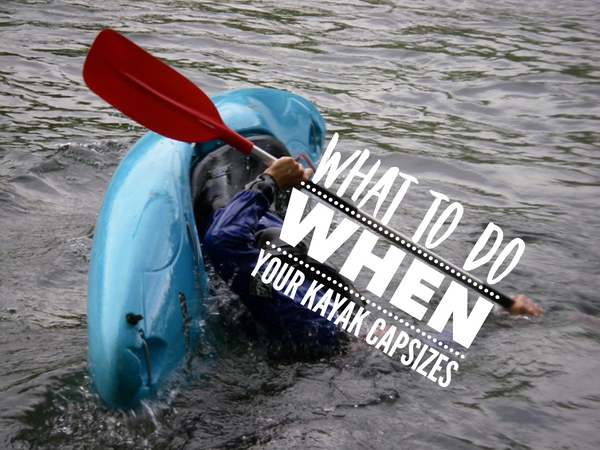Pros & Cons Of Inflatable Kayaks

Are you having trouble deciding whether you should invest in an inflatable or a hard shell kayak? Hard shell kayaks are the most common with lots of options to choose from, but inflatable kayaks have come a long way and are quickly rising in popularity.
First of all, what exactly is an inflatable kayak? It’s exactly what it sounds like. It’s a kayak that you inflate when needed, and deflate when you’re done. There’s pros and cons to both inflatables and hard shells, and in the article below, we’ll show you why!
Kayak Weight
One of the challenges with hard shell kayaks is their weight, especially when it comes to transportation. It can be a challenge to get them onto your vehicle’s roof racks, and it can be a challenge to get them off. This might be easy when you’re young and strong, but it can become a problem when you get up there in age.
Inflatable kayaks eliminate this issue. Most inflatables weigh between 30-40lbs and are easy to carry. Because of their lightweight nature, they’ve become popular with those who lack physical strength, but still enjoy getting out on the water.
Below is an example of a higher end, more expensive inflatable kayak
Kayak Size
Another reason inflatables have grown quickly in popularity is their size. Unlike hard shell kayaks that typically range from 8-16ft long, inflatable kayaks can fold up small and fit into a backpack. They’re perfect for people who live in the city, lack storage space or have small vehicles. They’re easy to store, easy to transport and you can quickly throw them in a car without the need for crossbars or roof racks!
Durability
This is a common misconception when it comes to inflatable kayaks. When you think of filling a kayak with air, it only seems logical that they can easily be punctured or damaged. In reality, the opposite is quite true. The combination of thick, durable rubber and rugged PVC materials, along with innovative modern technology, has made inflatable kayaks extremely resilient and strong.
Below is an example of a higher end, more affordable inflatable kayak
Stability
This is another common misconception with inflatable kayaks. Many people picture themselves sitting on a pool float that folds in half when it bears too much weight. Inflatable kayaks aren’t made the same way. It's not even close. Not only are they durable, but as long as you fill them with enough air, which is measured in PSI (pounds per square inch), your inflatable kayak will be extremely rigid and stable as well.
Control
With heavier hard shell kayaks, you’ll typically have more control in rough water, strong currents and wind than you would with a lighter inflatable, but as we already mentioned, inflatable technology is changing and the performance of "higher end" inflatables isn’t far behind.
Below is an example of a middle of the pack, more affordable inflatable kayak
Inflating & Deflating Your Kayak
Unlike hard shell kayaks, there is a little more work involved with inflatables, specifically inflating and deflating them before and after each use.
When inflating your kayak, there’s a few things to keep in mind. The first is having the correct pump that’s capable of reaching the desired PSI. Unless you have some powerful lungs, you definitely don't want to be doing this by mouth.
The second thing is the amount of time it will take to inflate your kayak, which is typically around 10 minutes. Neither is a big deal, as long as you understand and are prepared.
When you’re done using your inflatable kayak, you’ll want to make sure it’s clean and dry before you remove the air and place it into storage. If you deflate and pack a wet, dirty kayak, be prepared for a wet, smelly kayak when you go out on your next trip.
Below is an example of the least expensive types of inflatable kayaks
Price
Just like everything else in the world, you get what you pay for, and inflatable kayaks are no different. Typically, inflatable kayaks range in price from $60-$2000. Personally, we’ve never tried a $60 inflatable, but based on the reviews, you’re not going to get the same performance you would with an $800 inflatable.
Having said that, it all depends on what you’re looking for. If you only hit the water a couple times a year, a less expensive inflatable might be perfect, whereas if you kayak more often, and are looking for something that more resembles a hard shell kayak, it probably makes sense to invest a little more money.
If you’re still unsure of what kind of kayak to buy, head to a local kayak rental company to test both a hard shell and inflatable kayak out to see which one works best for you. The best way to decide is by going out on the water and experiencing the difference between the two yourself.
Spread The Word & Pin It 😊
Disclosure: BEST Marine and Outdoors is a participant in the Amazon Services LLC Associates Program, an affiliate advertising program designed to provide a means for sites to earn advertising fees by advertising and linking to Amazon.com. This means if you click on the links above and purchase an item, we will receive an affiliate commission at no extra cost to you.
Leave a comment
Comments will be approved before showing up.
Also in Blog

How to Choose the Right Kayak Anchor
Choosing the right kayak anchor can make all the difference when it comes to staying steady on the water. This guide walks you through everything you need to know about selecting the perfect folding kayak anchor

What To Do When Your Kayak Capsizes
Although kayaks are designed for stability no matter the conditions, accidents happen and knowing what to do can help you avoid an unpleasant experience. Preparedness and technique are key components to controlling a sometimes scary situation.






